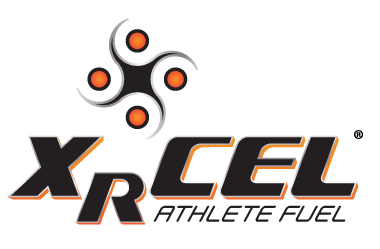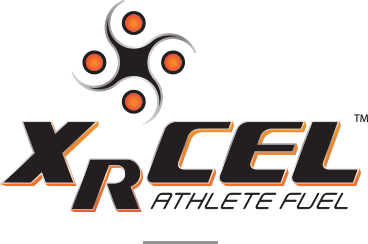
Science + Nutrition
Nutritional Info
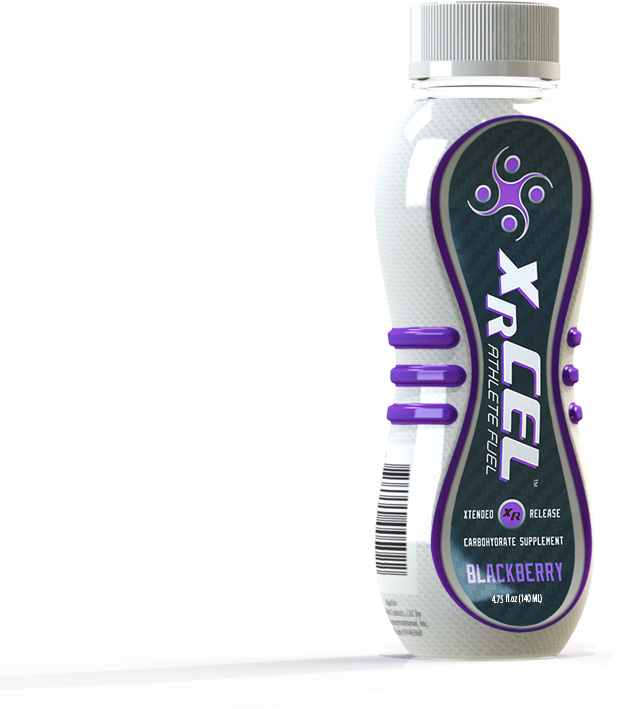
DRINK TO PREPARE.
DRINK TO REFUEL.
DRINK TO RECOVER.
Drink one specially designed 4.75 ounce bottle of XRCEL® Athlete Fuel 15 minutes before training or competing to give your body both an instant and extended release of muscle and brain fueling energy. Also use XRCEL® to refuel during lengthy training sessions or competitions to help you perform at your peak for a longer period of time.

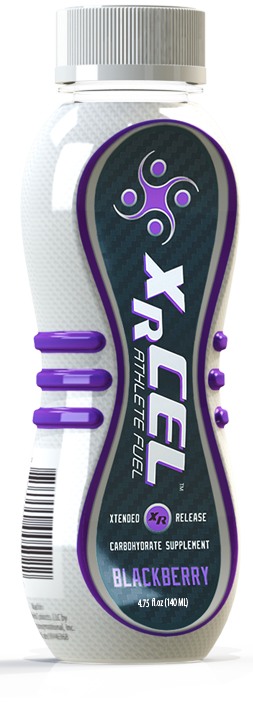
DRINK TO PREPARE.
DRINK TO REFUEL.
DRINK TO RECOVER.
Drink one specially designed 4.75 ounce bottle of XRCEL® Athlete Fuel 15 minutes before training or competing to give your body both an instant and extended release of muscle and brain fueling energy. Also use XRCEL® to refuel during lengthy training sessions or competitions to help you perform at your peak for a longer period of time.


Right Carb
Glucose – for immediate and sustained energy.

Right Location
Specially formulated glucose micro-gels spend more time near the “glucose gateways” in the small intestine, improving the uptake of glucose into the body.
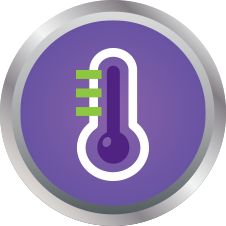
Right Time
Patented micro-gels increase the release rate of glucose when body temperature levels rise during strenuous activity, providing you with more fuel in the heat of competition.

Ingredients to help you outperform, outthink and outlast your competition.
Click to view
Supplemental Facts
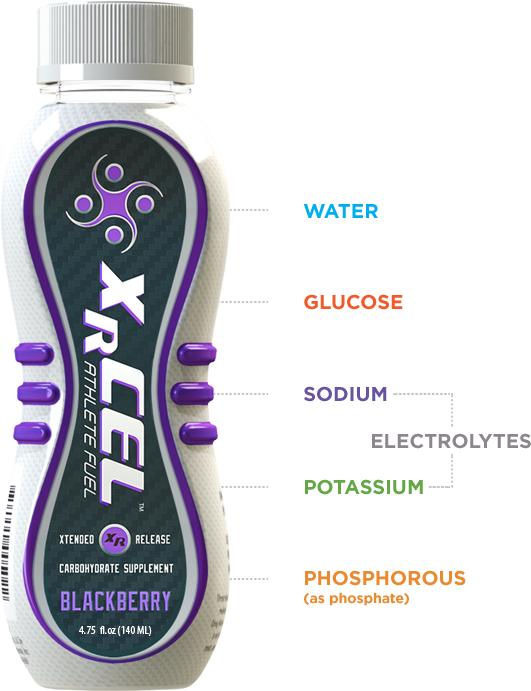
XRCEL® Athlete Fuel is a great tasting, drinkable sports supplement made with specially formulated glucose, which is a simple carbohydrate (carb). Why glucose? Because glucose provides the most immediate source of fuel for your body and brain. What sets XRCEL® apart from other sports drinks and supplements is our patented glucose-loaded micro-gels. These pH and heat activated micro-gels are optimized to work with your body, to quickly and steadily release fuel as your body needs it, keeping you firing on all cylinders from start to finish. XRCEL® also includes essential electrolytes and minerals to give you the nutrients you need to maximize performance.
Glucose
Glucose
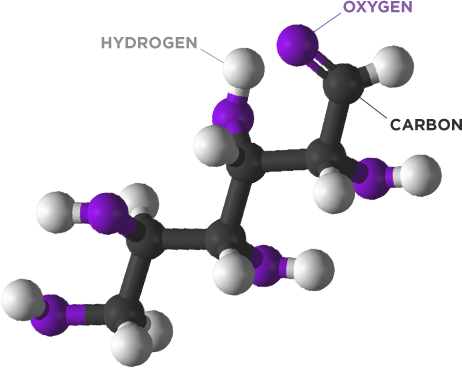
Glucose is immediately available for energy
The glucose in XRCEL® is a simple carb that can be converted to energy in one step. Fructose, galactose and other carbs, found in many sports drinks and supplements, require multiple steps to be converted to energy, making them a less efficient fuel source compared to glucose. [4-7]
XRCEL® delivers glucose to where your body needs it.
Along with an instant dose of muscle and brain fueling glucose, each 4.75 ounce bottle of XRCEL® delivers extended release micro-gels tuned to steadily release the right amount of additional glucose into your bloodstream. This extended release is controlled by the conditions in your digestive system, pH, and temperature. The micro-gels in XRCEL® are designed to optimize the release of glucose near the “glucose gateways” in the small intestine. XRCEL® also increases the glucose release rate as your core body temperature rises during strenuous activity.
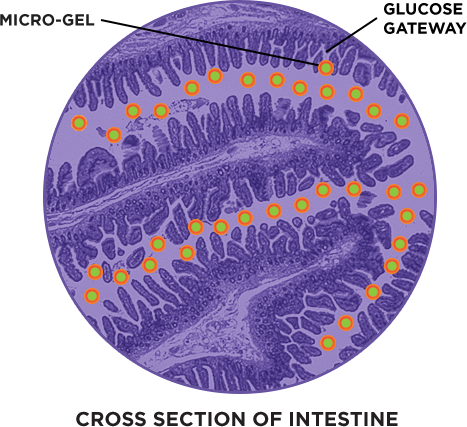
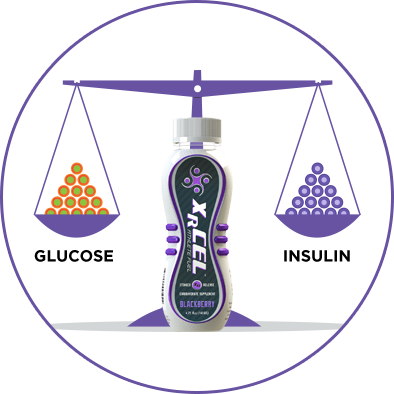
Can too much glucose cause an energy crash?
Each 4.75 ounce bottle of XRCEL® delivers just the right amount of glucose to fuel your body, reducing the chance of elevating insulin levels and causing a crash in energy.
Carbohydrates
FUEL FOR YOUR BODY
Carbohydrates
FUEL FOR YOUR BODY
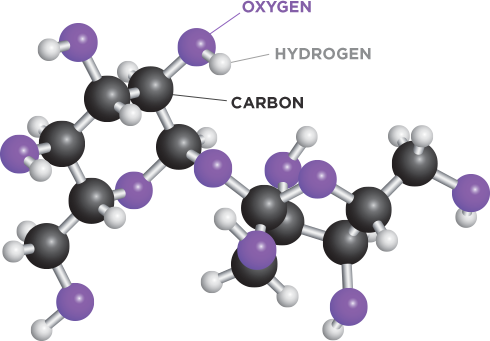
What are Carbs?
Carbohydrates (carbs) are compounds made up of types of sugars, such as fructose, glucose, sucrose and galactose. Carbs come from the nutrients in the food you eat and are the most common fuel source used to power and replenish your muscles during physical activity. Carbs also have the most positive effect on exercise performance. [1-3] The carb your body looks for first when your muscles and brain need more energy is glucose, the main carbohydrate in XRCEL®.
Two types of carbs: [8-9]
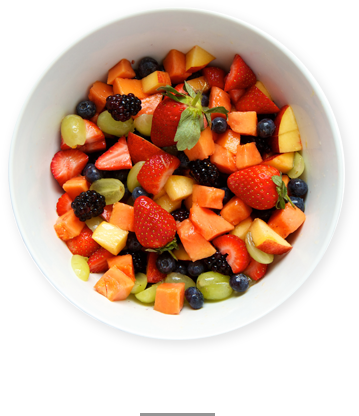
Simple Carbs
Fruit
Sugar
Glucose
Sucrose
Fructose
Dextrose
Simple Carbs like glucose are broken down and absorbed quickly by your body, providing immediate fuel.
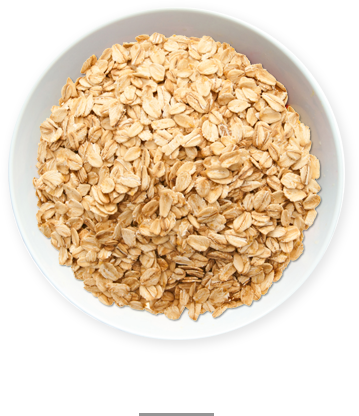
Complex Carbs
Vegetable
Whole Grains
Beans
Starch
Complex Carbs like starch are broken down slowly, taking longer to make the energy available.
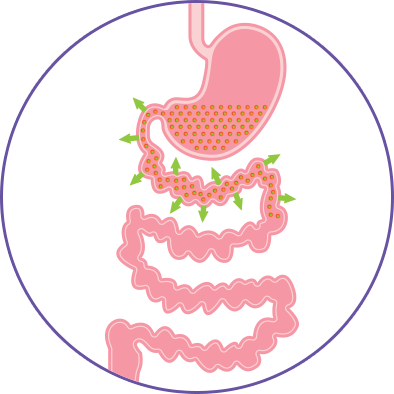
How do carbs work?
Your body converts carbs, in the food you eat, into fuel for the body. All carbs are eventually converted to glucose, the main ingredient in XRCEL®, which is then rapidly converted to the energy that powers your muscles and brain. Any carbs not immediately used for fuel are converted to glycogen and stored in the muscles and liver for later use. Carbs provide both an immediate energy source and a way to store energy for later use. [3,15-20]
How can you use carbs to help maximize your body’s potential?
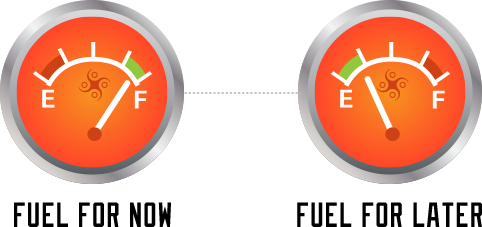
Up to now, you had two fuel choices. Either immediate release carbs that upped the risk of an energy crash, or complex carbs that take longer to break down and may not be available when you need them. Ideally you want your body to burn carbs that provide immediate fuel for as long as possible, saving complex carbs as reserve fuel. XRCEL® Athlete Fuel helps you do just that by providing a combination of glucose that is available as immediate energy and an extended release dose of glucose your body will tap into later.
Extended Release
FUEL WHEN YOU NEED IT

XRCEL® releases glucose when your body needs it.
Along with an instant dose of muscle and brain fueling glucose, each 4.75 ounce bottle of XRCEL® delivers extended release micro-gels tuned to steadily release the right amount of additional glucose into your bloodstream. This extended release is controlled by the conditions in your digestive system, pH, and temperature. The micro-gels in XRCEL® are designed to optimize the release of glucose near the “glucose gateways” in the small intestine. XRCEL® also increases the glucose release rate as your core body temperature rises during strenuous activity.
Extended Release
FUEL WHEN YOU NEED IT

XRCEL® releases glucose when your body needs it.
Along with an instant dose of muscle and brain fueling glucose, each 4.75 ounce bottle of XRCEL® delivers extended release micro-gels tuned to steadily release the right amount of additional glucose into your bloodstream. This extended release is controlled by the conditions in your digestive system, pH, and temperature. The micro-gels in XRCEL® are designed to optimize the release of glucose near the “glucose gateways” in the small intestine. XRCEL® also increases the glucose release rate as your core body temperature rises during strenuous activity.

The extended release micro-gels in XRCEL® set free additional glucose when your body needs it, which could mean one less break to refuel during extended training or competitions. One less break can save you time and help you stay focused on outperforming your competition.
XRCEL® helps you push your body harder for longer.
Your body naturally stores enough energy for about two hours of exercise. To avoid hitting the wall, you need to refuel your body with carbs. XRCEL® is optimized to refuel your body with glucose – the most efficient carb – during athletic events. XRCEL® is optimized to help enhance athletic performance:
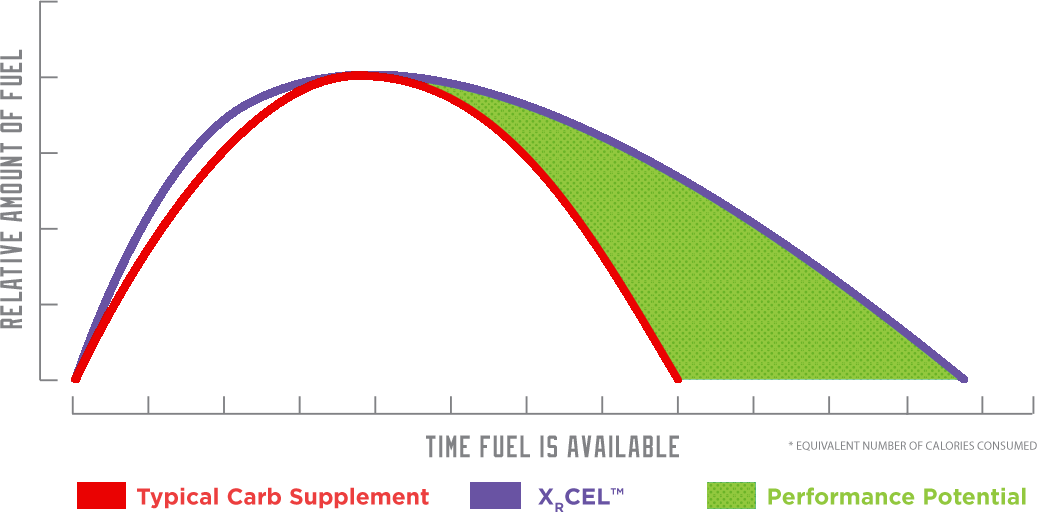
- Instant release of glucose for immediate fuel
- Glucose-loaded, extended release micro-gels provide an extended dose of fuel
- Tuned to release glucose-loaded micro-gels when your body needs them
- pH responsive formula puts fuel in the right location to optimize absorption, allowing rapid conversion of glucose to energy
- XRCEL® helps the body use less glycogen and thus preserves energy reserves. And if reserves are depleted, XRCEL® helps restore them faster.
Simply put, XRCEL® lasts longer.
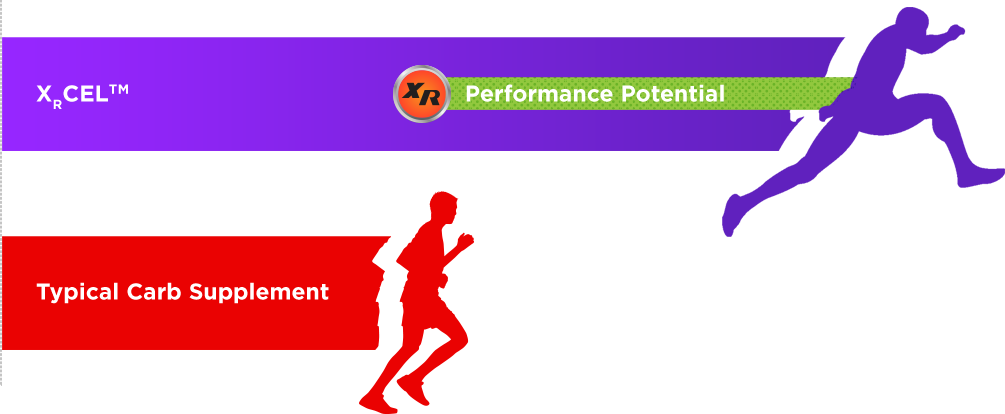
Distribution + Absorption:
More fuel where you need it
When you’re pushing your body to the limit during physical activity, as much as 85% of blood flow is routed directly to your brain and muscles, reducing the amount of blood to your stomach and other parts of your body, including your digestive system. [12] This makes it harder for your body to digest food, so your brain begins searching for glucose, which it can immediately use as fuel. This is where the extended release micro gels in XRCEL® kick in. The micro-gels in XRCEL® wait next to the “glucose gateways” where they are efficiently absorbed into your bloodstream, taking the expressway to your brain and muscles. XRCEL® is an optimal way to supply your brain and muscles with the critical fuel needed to maintain your focus and intensity.
Distribution + Absorption:
More fuel where you need it
When you’re pushing your body to the limit during physical activity, as much as 85% of blood flow is routed directly to your brain and muscles, reducing the amount of blood to your stomach and other parts of your body, including your digestive system. [12] This makes it harder for your body to digest food, so your brain begins searching for glucose, which it can immediately use as fuel. This is where the extended release micro gels in XRCEL® kick in. The micro-gels in XRCEL® wait next to the “glucose gateways” where they are efficiently absorbed into your bloodstream, taking the expressway to your brain and muscles. XRCEL® is an optimal way to supply your brain and muscles with the critical fuel needed to maintain your focus and intensity.
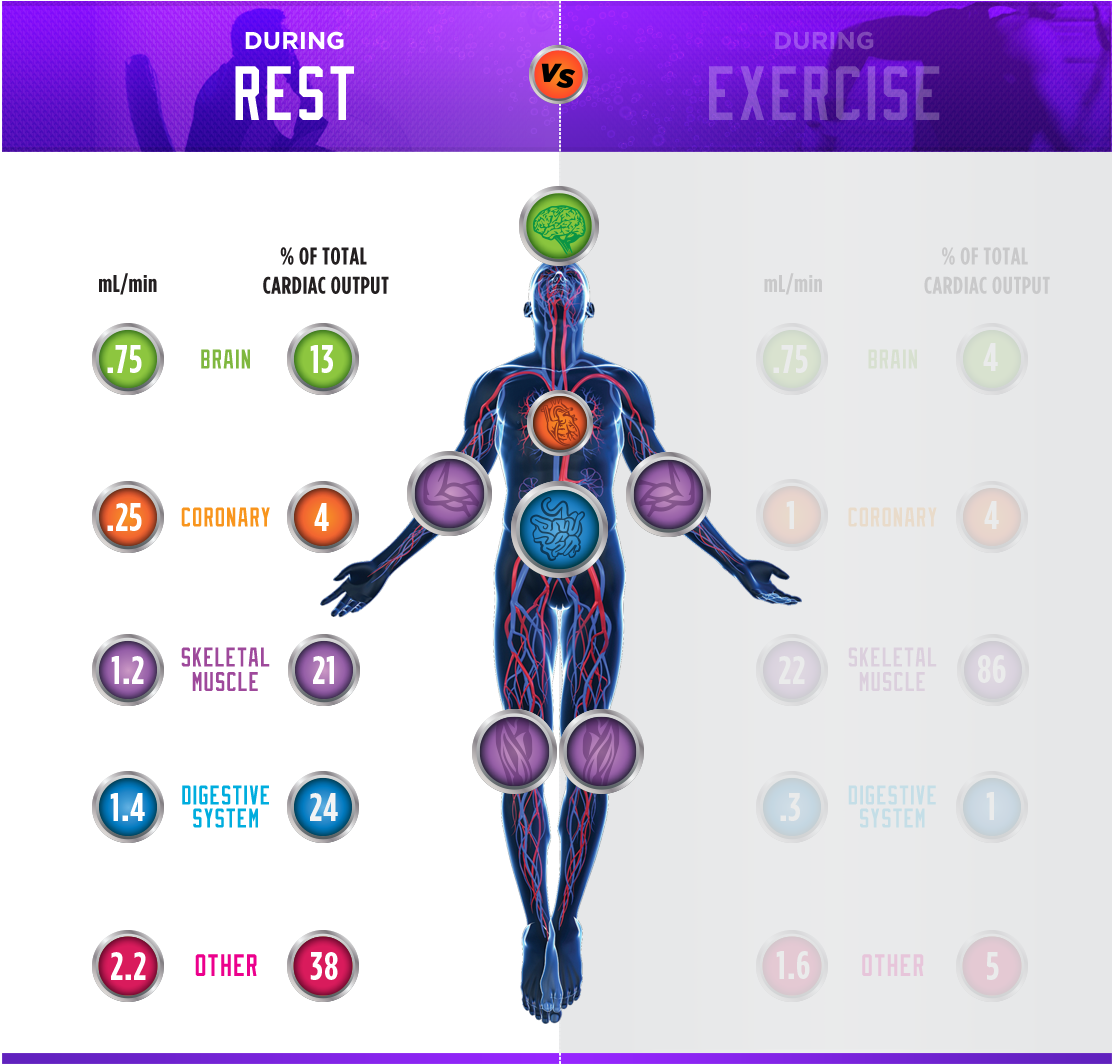
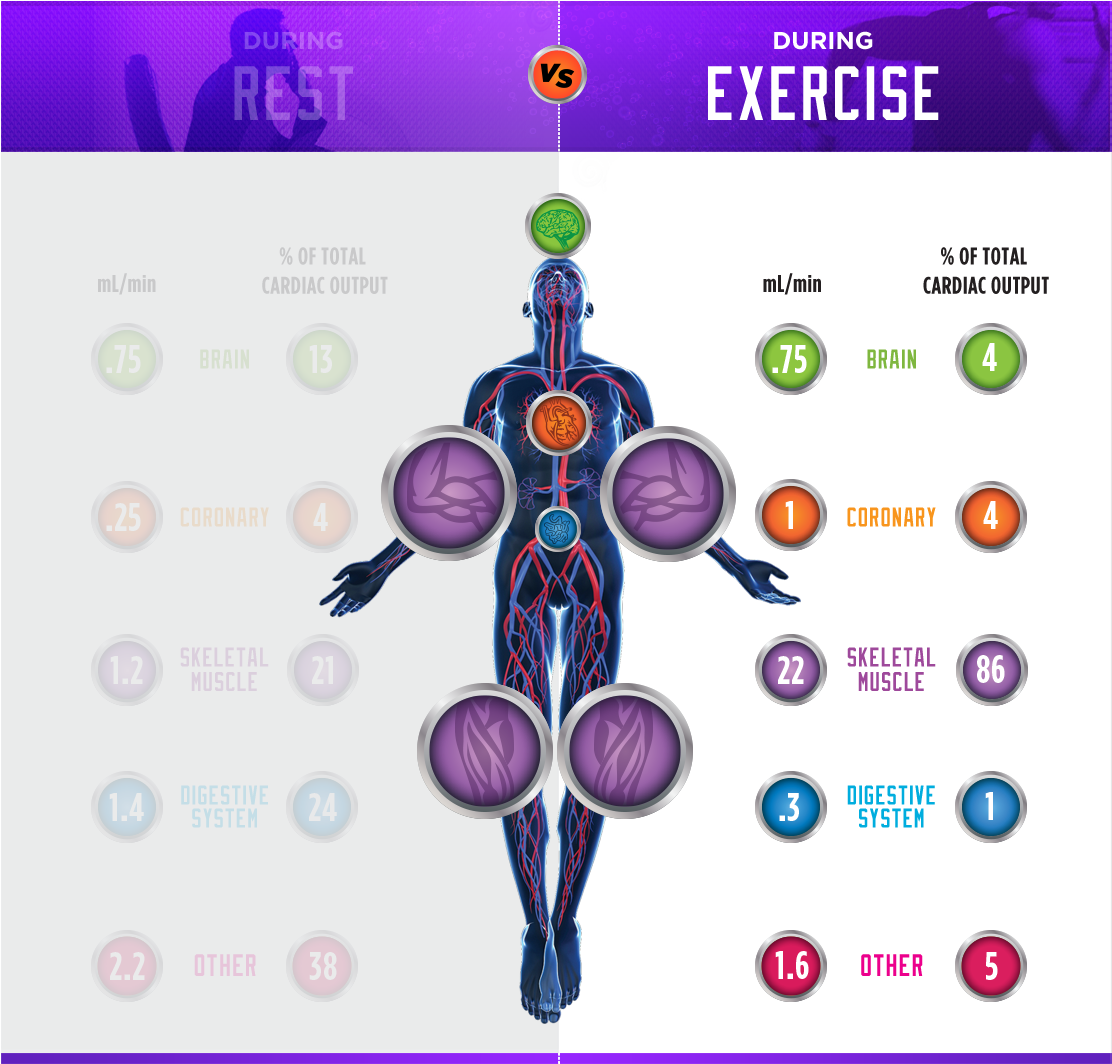
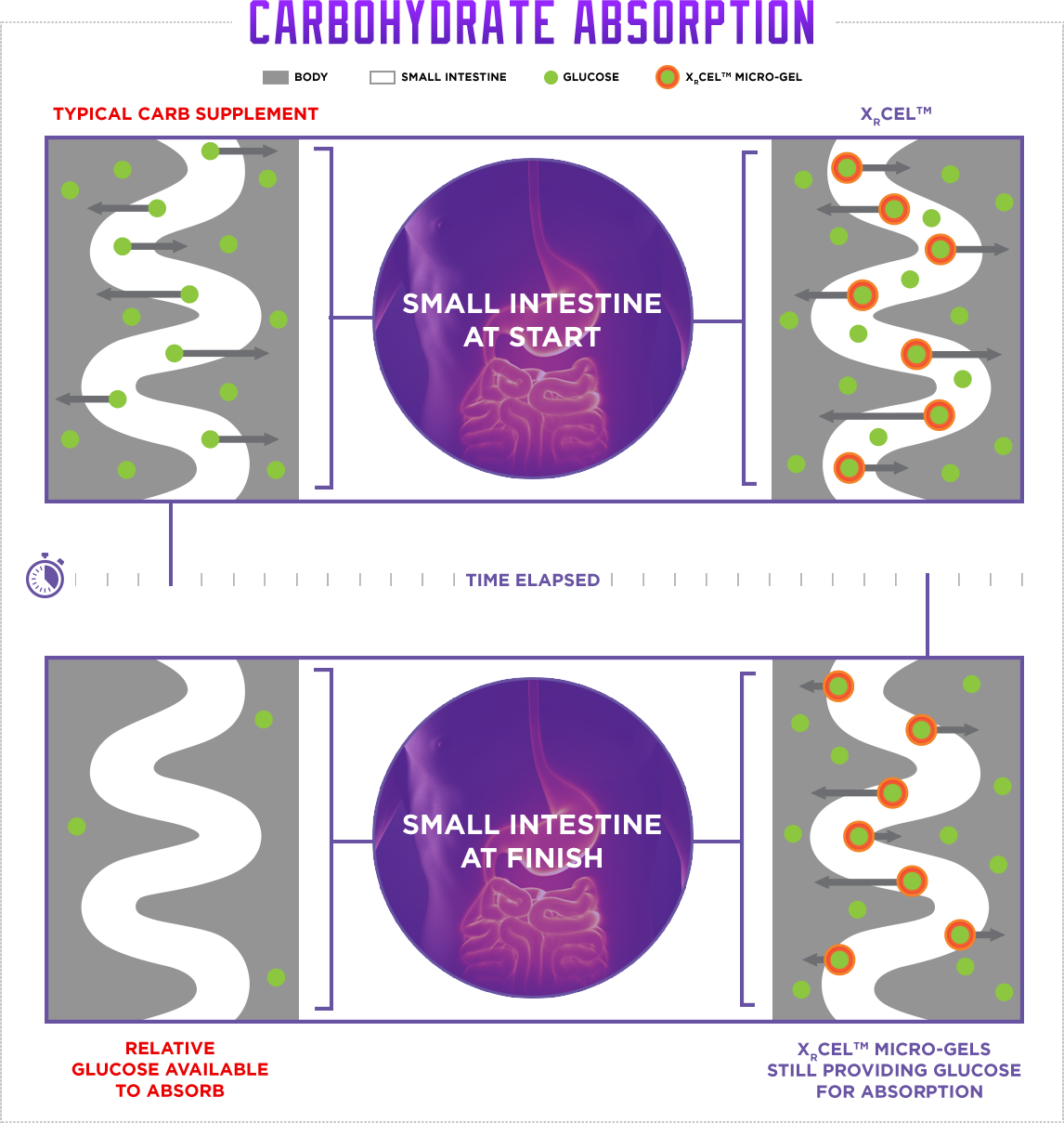
XRCEL® helps you stay focused and sharp.
Keeping your brain fed during intense exercise and competition is critical to maintaining focus and keeping your muscles moving. When the brain loses energy, it starts to shut down your muscles. [21-24] In the heat of intense activity, your brain seeks out the brain and muscle fueling glucose found in XRCEL®, which it can quickly convert to energy. Fueling up with XRCEL® gives you instant glucose, and more importantly, this new breed of carbohydrate supplement gives you an extended release of glucose as your body needs it. This means your brain and muscles are satisfied, letting you focus on the next mile, the spin of the ball, the trajectory of your shot and that split second between winning and losing. XRCEL® is an athlete fuel that helps with both the physical and mental part of performing at your peak.

References + Support
References
- Jeukendrup A, Brouns F, Wagenmakers AJ, Saris WH. Carbohydrate-electrolyte feedings improve 1 h time trial cycling performance. Int J Sports Med. 1997 Feb;18(2):125-9.
- Coyle EF, Coggan AR, Hemmert MK, Ivy JL. Muscle glycogen utilization during prolonged strenuous exercise when fed carbohydrate. J Appl Physiol. 1986 Jul;61(1):165-72.
- Bergstrom J, Hermansen, L., Hultman, E., Saltin, B. Diet, muscle glycogen and physical performance. Acta Physiol Scand. 1967;71(2):140-50.
- Samols E, Dormandy, T.L. Insulin response to fructose and galactose. Lancet. 1963;1(7279):478-9.
- Jandrain BJ, Pallikarakis N, Normand S, Pirnay F, Lacroix M, Mosora F, et al. Fructose utilization during exercise in men: rapid conversion of ingested fructose to circulating glucose. J Appl Physiol. 1993 May;74(5):2146-54.
- Chen M, Whistler RL. Metabolism of D-fructose. Adv Carbohydr Chem Biochem. 1977;34:265-343.
- Leijssen DP, Saris WH, Jeukendrup AE, Wagenmakers AJ. Oxidation of exogenous [13C]galactose and [13C]glucose during exercise. J Appl Physiol. 1995 Sep;79(3):720-5.
- Wolever TM, Jenkins DJ, Jenkins AL, Josse RG. The glycemic index: methodology and clinical implications. The American journal of clinical nutrition. 1991 Nov;54(5):846-54.
- Rehrer NJ, Wagenmakers AJ, Beckers EJ, Halliday D, Leiper JB, Brouns F, et al. Gastric emptying, absorption, and carbohydrate oxidation during prolonged exercise. J Appl Physiol. 1992 Feb;72(2):468-75.
- Little TJ, Doran S, Meyer JH, Smout AJ, O’Donovan DG, Wu KL, et al. The release of GLP-1 and ghrelin, but not GIP and CCK, by glucose is dependent upon the length of small intestine exposed. Am J Physiol Endocrinol Metab. 2006 Sep;291(3):E647-55.
- Austin J, Marks D. Hormonal regulators of appetite. International journal of pediatric endocrinology. 2009;2009:141753.
- Parks DA, Jacobson ED. Physiology of the splanchnic circulation. Arch Intern Med. 1985 Jul;145(7):1278-81.
- Perko MJ, Nielsen HB, Skak C, Clemmesen JO, Schroeder TV, Secher NH. Mesenteric, coeliac and splanchnic blood flow in humans during exercise. J Physiol. 1998 Dec 15;513 ( Pt 3):907-13.
- Physiology of Sport and Exercise. 2nd ed. Champaign, IL: Human Kinetics; 1999. 710 p.
- Exercise physiology: human bioenergetics and its application. 3rd ed. Mountain View, CA: Mayfield Publishing C.; 2000.
- Dudley GA, Abraham WM, Terjung RL. Influence of exercise intensity and duration on biochemical adaptations in skeletal muscle. J Appl Physiol. 1982 Oct;53(4):844-50.
- Haff GG. Carbohydrates. In: Antonio J, Kalman, D., Stout, J.R., Greenwood, M., Willoughby, D.S., Haff, G.G., editor. Essentials of Sports Nutrition and Exercise: Humana Press; 2008. p. 281-311.
- Pitsiladis YP, Maughan RJ. The effects of exercise and diet manipulation on the capacity to perform prolonged exercise in the heat and in the cold in trained humans. J Physiol. 1999 Jun 15;517 ( Pt 3):919-30.
- Pitsiladis YP, Maughan RJ. The effects of alterations in dietary carbohydrate intake on the performance of high-intensity exercise in trained individuals. Eur J Appl Physiol Occup Physiol. 1999 Apr;79(5):433-42.
- Vandenbogaerde TJ, Hopkins, W.G. Effects of acute carbohydrate supplementation on endurance performance: a meta-analysis. Sports Med. 2011;41(9):773-92.
- Newsholme EA, Blomstrand E, Ekblom B. Physical and mental fatigue: metabolic mechanisms and importance of plasma amino acids. Br Med Bull. 1992 Jul;48(3):477-95.
- Matsui T, Soya S, Okamoto M, Ichitani Y, Kawanaka K, Soya H. Brain glycogen decreases during prolonged exercise. J Physiol. 2011 Jul 1;589(Pt 13):3383-93.
- Matsui T, Ishikawa T, Ito H, Okamoto M, Inoue K, Lee MC, et al. Brain glycogen supercompensation following exhaustive exercise. J Physiol. 2012 Feb 1;590(Pt 3):607-16.
- Peters A, Schweiger U, Pellerin L, Hubold C, Oltmanns KM, Conrad M, et al. The selfish brain: competition for energy resources. Neurosci Biobehav Rev. 2004 Apr;28(2):143-80.
References + Support
References
- Jeukendrup A, Brouns F, Wagenmakers AJ, Saris WH. Carbohydrate-electrolyte feedings improve 1 h time trial cycling performance. Int J Sports Med. 1997 Feb;18(2):125-9.
- Coyle EF, Coggan AR, Hemmert MK, Ivy JL. Muscle glycogen utilization during prolonged strenuous exercise when fed carbohydrate. J Appl Physiol. 1986 Jul;61(1):165-72.
- Bergstrom J, Hermansen, L., Hultman, E., Saltin, B. Diet, muscle glycogen and physical performance. Acta Physiol Scand. 1967;71(2):140-50.
- Samols E, Dormandy, T.L. Insulin response to fructose and galactose. Lancet. 1963;1(7279):478-9.
- Jandrain BJ, Pallikarakis N, Normand S, Pirnay F, Lacroix M, Mosora F, et al. Fructose utilization during exercise in men: rapid conversion of ingested fructose to circulating glucose. J Appl Physiol. 1993 May;74(5):2146-54.
- Chen M, Whistler RL. Metabolism of D-fructose. Adv Carbohydr Chem Biochem. 1977;34:265-343.
- Leijssen DP, Saris WH, Jeukendrup AE, Wagenmakers AJ. Oxidation of exogenous [13C]galactose and [13C]glucose during exercise. J Appl Physiol. 1995 Sep;79(3):720-5.
- Wolever TM, Jenkins DJ, Jenkins AL, Josse RG. The glycemic index: methodology and clinical implications. The American journal of clinical nutrition. 1991 Nov;54(5):846-54.
- Rehrer NJ, Wagenmakers AJ, Beckers EJ, Halliday D, Leiper JB, Brouns F, et al. Gastric emptying, absorption, and carbohydrate oxidation during prolonged exercise. J Appl Physiol. 1992 Feb;72(2):468-75.
- Little TJ, Doran S, Meyer JH, Smout AJ, O’Donovan DG, Wu KL, et al. The release of GLP-1 and ghrelin, but not GIP and CCK, by glucose is dependent upon the length of small intestine exposed. Am J Physiol Endocrinol Metab. 2006 Sep;291(3):E647-55.
- Austin J, Marks D. Hormonal regulators of appetite. International journal of pediatric endocrinology. 2009;2009:141753.
- Parks DA, Jacobson ED. Physiology of the splanchnic circulation. Arch Intern Med. 1985 Jul;145(7):1278-81.
- Perko MJ, Nielsen HB, Skak C, Clemmesen JO, Schroeder TV, Secher NH. Mesenteric, coeliac and splanchnic blood flow in humans during exercise. J Physiol. 1998 Dec 15;513 ( Pt 3):907-13.
- Physiology of Sport and Exercise. 2nd ed. Champaign, IL: Human Kinetics; 1999. 710 p.
- Exercise physiology: human bioenergetics and its application. 3rd ed. Mountain View, CA: Mayfield Publishing C.; 2000.
- Dudley GA, Abraham WM, Terjung RL. Influence of exercise intensity and duration on biochemical adaptations in skeletal muscle. J Appl Physiol. 1982 Oct;53(4):844-50.
- Haff GG. Carbohydrates. In: Antonio J, Kalman, D., Stout, J.R., Greenwood, M., Willoughby, D.S., Haff, G.G., editor. Essentials of Sports Nutrition and Exercise: Humana Press; 2008. p. 281-311.
- Pitsiladis YP, Maughan RJ. The effects of exercise and diet manipulation on the capacity to perform prolonged exercise in the heat and in the cold in trained humans. J Physiol. 1999 Jun 15;517 ( Pt 3):919-30.
- Pitsiladis YP, Maughan RJ. The effects of alterations in dietary carbohydrate intake on the performance of high-intensity exercise in trained individuals. Eur J Appl Physiol Occup Physiol. 1999 Apr;79(5):433-42.
- Vandenbogaerde TJ, Hopkins, W.G. Effects of acute carbohydrate supplementation on endurance performance: a meta-analysis. Sports Med. 2011;41(9):773-92.
- Newsholme EA, Blomstrand E, Ekblom B. Physical and mental fatigue: metabolic mechanisms and importance of plasma amino acids. Br Med Bull. 1992 Jul;48(3):477-95.
- Matsui T, Soya S, Okamoto M, Ichitani Y, Kawanaka K, Soya H. Brain glycogen decreases during prolonged exercise. J Physiol. 2011 Jul 1;589(Pt 13):3383-93.
- Matsui T, Ishikawa T, Ito H, Okamoto M, Inoue K, Lee MC, et al. Brain glycogen supercompensation following exhaustive exercise. J Physiol. 2012 Feb 1;590(Pt 3):607-16.
- Peters A, Schweiger U, Pellerin L, Hubold C, Oltmanns KM, Conrad M, et al. The selfish brain: competition for energy resources. Neurosci Biobehav Rev. 2004 Apr;28(2):143-80.

